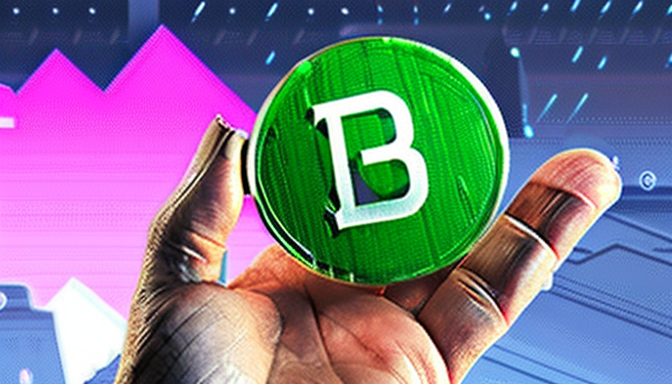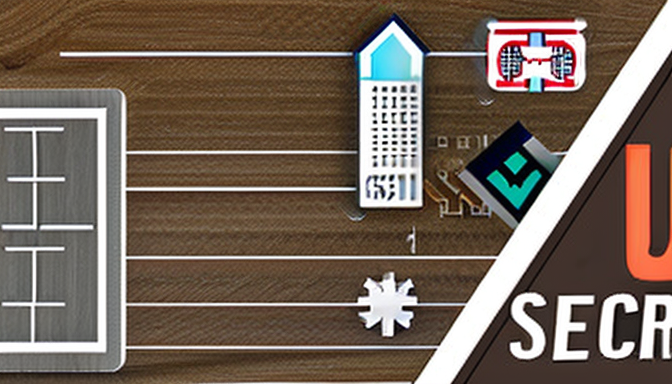Security tokens and utility tokens are vital elements in the blockchain ecosystem, each serving unique purposes and carrying distinct regulatory implications. Grasping their differences is crucial for both investors and developers, as it influences investment strategies and project development.
Security tokens function as digital representations of ownership in an underlying asset, such as shares of a company or real estate. They are governed by federal securities laws, meaning they must adhere to strict regulatory frameworks designed to protect investors. This includes offering rights such as dividends, profit sharing, and voting privileges, akin to traditional securities. For example, a real estate security token might allow investors to receive rental income proportional to their holdings.
In contrast, utility tokens are designed to provide users with access to a product or service within a specific blockchain ecosystem. Unlike security tokens, they do not represent ownership or confer any financial rights. A classic example is the use of utility tokens in decentralized applications (dApps), where users may need to purchase tokens to access features or services. This model emphasizes functionality over investment potential.
The legal framework surrounding security tokens varies significantly by jurisdiction. In the United States, the Securities and Exchange Commission (SEC) plays a pivotal role in overseeing security tokens. Compliance with regulations, including the Howey Test, is essential for determining whether a token qualifies as a security. This test evaluates whether an investment involves an expectation of profits derived from the efforts of others, a key factor in classifying security tokens.
Globally, regulations differ widely. The European Union has established specific guidelines for token offerings, while countries like Switzerland offer more lenient frameworks, fostering innovation in security token offerings (STOs). Such regulatory environments can significantly impact where and how tokens are issued and traded.
Moreover, security tokens present various use cases, including tokenization of real assets, equity stakes in startups, and even commodities. By enabling fractional ownership, security tokens democratize access to investments that were previously available only to high-net-worth individuals. This increased liquidity allows for quicker transactions and trading on secondary markets, enhancing the overall investment experience.
However, challenges remain. Regulatory uncertainty, technological barriers, and market adoption issues pose significant hurdles. The evolving nature of regulations can create confusion for issuers and investors alike, complicating compliance. Additionally, implementing robust blockchain infrastructure requires significant investment and expertise.
When comparing security tokens to utility tokens, the fundamental differences lie in their purpose and the rights they confer. Security tokens are primarily investment vehicles, while utility tokens serve as access keys to platforms or applications. This distinction is critical for understanding their roles within the broader blockchain landscape.
Looking ahead, the future of tokenization appears promising. Trends indicate a growing adoption of both security and utility tokens across various sectors, including finance, real estate, and art. As blockchain technology continues to evolve, its integration with traditional finance could revolutionize investment strategies, enhancing capital allocation and asset management.
In conclusion, navigating the token landscape requires a comprehensive understanding of the distinctions between security and utility tokens. As the blockchain ecosystem evolves, this knowledge will empower investors and developers to make informed decisions, ensuring they leverage the full potential of these innovative financial instruments.

Understanding Security Tokens
Security tokens are a pivotal innovation in the realm of digital finance, representing ownership in tangible and intangible assets. Unlike traditional forms of ownership, security tokens are embedded within a blockchain framework, ensuring transparency and immutability. These tokens are not merely digital representations; they are regulated financial instruments that provide investors with a suite of rights similar to those associated with conventional securities.
One of the most significant characteristics of security tokens is their compliance with federal securities regulations. This compliance ensures that investors are afforded protections under the law. For instance, security tokens can provide holders with rights such as dividends, which are periodic payments made to shareholders from a company’s profits. Additionally, investors may also benefit from profit sharing, where a portion of the profits is distributed among token holders. In many cases, security tokens also confer voting rights, allowing holders to participate in key decisions regarding the governance of the issuing entity.
To illustrate the practical applications of security tokens, consider the case of real estate investments. Traditional real estate investments often require significant capital, making them accessible only to affluent investors. However, with security tokens, fractional ownership becomes feasible. Investors can buy tokens representing a share of a property, thus democratizing access to real estate investments. This not only broadens the investor base but also enhances liquidity, as these tokens can be traded on secondary markets.
Furthermore, a study published in the Journal of Financial Technology highlights that the tokenization of assets can lead to increased market efficiency. By utilizing blockchain technology, security tokens streamline the process of buying, selling, and trading assets, reducing transaction costs and times significantly. This is particularly beneficial in sectors like real estate and private equity, where traditional processes can be cumbersome and slow.
However, it is essential to acknowledge the challenges that security tokens face. Regulatory uncertainty remains a significant barrier, as laws and guidelines are still evolving. This can create confusion for both issuers and investors regarding compliance requirements. Moreover, the technological infrastructure necessary for security token issuance and trading must be robust and secure to prevent fraud and hacking incidents.
In conclusion, security tokens represent a transformative shift in how ownership and investment are conceptualized in the digital age. Their ability to provide rights akin to traditional securities, combined with the advantages of blockchain technology, positions them as a promising avenue for future investments. As regulations continue to develop and the market matures, security tokens may very well redefine the landscape of asset ownership.

Understanding Utility Tokens
Utility tokens play a pivotal role in the blockchain ecosystem by granting users access to specific products or services. These tokens are not merely digital currencies; rather, they serve as access keys that enable holders to utilize various functionalities within a decentralized platform. Unlike traditional securities, utility tokens are not intended for investment purposes and do not provide ownership rights. This distinction is crucial for understanding their function and regulatory treatment.
To illustrate, consider the case of Ethereum’s Ether (ETH). Ether is primarily used to facilitate transactions on the Ethereum network, allowing users to deploy smart contracts and decentralized applications (dApps). This utility aspect distinguishes it from securities, which are designed to generate returns for investors. Research indicates that utility tokens can drive user engagement and enhance the overall functionality of blockchain applications.
Furthermore, utility tokens often operate within a specific ecosystem. For instance, the Basic Attention Token (BAT) is integrated into the Brave browser, rewarding users for their attention while browsing the web. Users can earn BAT tokens by viewing advertisements, which they can then use to support content creators or access premium features. This model highlights how utility tokens can create a symbiotic relationship between users, advertisers, and developers.
The legal framework surrounding utility tokens varies significantly across jurisdictions. In the United States, the Securities and Exchange Commission (SEC) has clarified that utility tokens, when used solely for their intended purpose, do not fall under the category of securities. However, if a utility token is marketed as an investment, it may attract regulatory scrutiny. This regulatory landscape emphasizes the need for clear communication from issuers regarding the intended use of their tokens.
Examples of successful utility tokens include Chainlink (LINK) and Filecoin (FIL). Chainlink enables smart contracts to securely interact with real-world data, while Filecoin provides a decentralized storage solution. Both tokens exemplify how utility tokens can foster innovation and drive the adoption of blockchain technology.
In conclusion, understanding utility tokens is essential for anyone involved in the blockchain space. Their ability to grant access to services and functionalities within a decentralized ecosystem makes them a vital component of modern digital economies. As the blockchain landscape continues to evolve, the role of utility tokens is likely to expand, offering new opportunities for developers and users alike.
Legal Framework for Security Tokens
Security tokens are a pivotal innovation in the financial landscape, offering a regulated means of raising capital through digital assets. Unlike utility tokens, which primarily grant access to services, security tokens are classified as financial instruments that represent ownership in underlying assets. This classification subjects them to stringent regulations under securities law, which varies significantly across different jurisdictions. The legal framework surrounding security tokens is designed to protect investors by enforcing transparency and ensuring that issuers provide necessary disclosures.
In the United States, the Securities and Exchange Commission (SEC) plays a crucial role in overseeing the issuance and trading of security tokens. The SEC applies the Howey Test to determine whether a token qualifies as a security. This test evaluates whether an investment of money is made in a common enterprise with the expectation of profits derived from the efforts of others. If a token meets these criteria, it must comply with federal securities laws, including registration requirements and ongoing reporting obligations.
Internationally, the regulatory landscape is diverse. For example, the European Union has established a comprehensive framework for regulating security tokens, emphasizing investor protection and market integrity. Conversely, jurisdictions like Switzerland have adopted a more accommodating approach, creating a favorable environment for security token offerings (STOs). This regulatory variability can create challenges for issuers looking to operate across borders, as they must navigate a patchwork of laws and regulations.
Moreover, the legal framework not only aims to protect investors but also fosters trust and legitimacy in the market. By mandating disclosures about the risks associated with investments, issuers are held accountable, which can enhance investor confidence. This is particularly important in the rapidly evolving landscape of digital assets, where the potential for fraud and misinformation is prevalent.
To illustrate the importance of this legal framework, consider the case of a security token offering that failed to comply with SEC regulations. The resulting penalties not only impacted the issuer financially but also led to a loss of credibility in the market. This underscores the necessity for companies to understand and adhere to the legal requirements surrounding security tokens.
In conclusion, the legal framework governing security tokens is essential for ensuring investor protection and market integrity. As the adoption of these digital assets continues to grow, it is imperative for issuers and investors alike to remain informed about the regulatory landscape and its implications for the future of finance.
Regulatory Bodies and Compliance
Regulatory bodies and compliance play a crucial role in the landscape of security tokens, particularly within the United States. The Securities and Exchange Commission (SEC) serves as the primary regulatory authority overseeing security tokens, ensuring that these digital assets adhere to existing securities laws. The SEC’s mandate includes protecting investors, maintaining fair markets, and facilitating capital formation. Compliance with regulations is not merely a formality; it is essential for the legal classification of security tokens.
At the heart of this regulatory framework is the Howey Test, a legal standard established by the U.S. Supreme Court in 1946. This test determines whether certain transactions qualify as investment contracts, thus categorizing them as securities. The Howey Test evaluates four criteria: the investment of money, a common enterprise, the expectation of profits, and the efforts of others. If a token meets these criteria, it is deemed a security and falls under the SEC’s jurisdiction.
Examples of Security Tokens include tokens representing shares in a company, real estate investments, or even artworks. For instance, platforms like RealtyBits enable fractional ownership of real estate through security tokens, allowing multiple investors to own a share of a property. This approach not only democratizes access to real estate investments but also ensures compliance with securities regulations.
Internationally, the regulatory landscape varies significantly. For example, in the European Union, the Markets in Crypto-Assets (MiCA) regulation aims to create a comprehensive framework for digital assets, including security tokens. Conversely, countries like Switzerland have adopted a more lenient approach, fostering an environment conducive to innovation while still ensuring investor protection.
Challenges exist in navigating the regulatory landscape. Companies may face uncertainty regarding compliance, as regulations are continually evolving. This uncertainty can deter innovation and adoption of security tokens. Moreover, the technological infrastructure required for issuing and trading security tokens must be robust to prevent fraud and ensure security.
In conclusion, understanding the role of regulatory bodies like the SEC and the importance of compliance is vital for anyone involved in the security token space. As the market matures, staying informed about regulations will empower investors and developers to navigate this complex landscape effectively.
International Regulations
regarding security tokens and their offerings are a complex landscape that varies significantly across different jurisdictions. This complexity arises from the differing legal frameworks, cultural attitudes towards investment, and the maturity of financial markets in each region. For example, the European Union (EU) has established comprehensive regulations governing security tokens, primarily through the Markets in Crypto-Assets (MiCA) regulation. This regulation aims to provide a clear and harmonized framework for crypto-assets, ensuring investor protection and market integrity.
In contrast, countries like Switzerland have adopted a more lenient approach to security token offerings (STOs). The Swiss Financial Market Supervisory Authority (FINMA) has developed a framework that encourages innovation while ensuring compliance with securities laws. This regulatory environment has made Switzerland a popular hub for blockchain startups and STOs, attracting businesses looking for a friendly jurisdiction to launch their projects.
Furthermore, the United States presents a different regulatory challenge. The Securities and Exchange Commission (SEC) enforces strict compliance with securities laws, which can create hurdles for companies attempting to issue security tokens. The Howey Test, which determines whether an asset is classified as a security, adds another layer of complexity. Companies must navigate these regulations carefully to avoid legal repercussions.
In Asia, regulations also differ widely. For instance, Singapore has implemented a progressive regulatory framework via the Monetary Authority of Singapore (MAS), which has been proactive in providing guidance for security tokens. This approach contrasts sharply with countries like China, where initial coin offerings (ICOs) and STOs have faced significant restrictions.
- EU: Comprehensive regulations under MiCA for investor protection.
- Switzerland: Lenient framework promoting innovation in STOs.
- USA: Strict SEC regulations and the Howey Test for compliance.
- Singapore: Progressive regulations encouraging security token development.
- China: Significant restrictions on ICOs and STOs.
Adhering to these regulations is crucial for the legitimacy and success of security token offerings. Companies must ensure they are compliant with local laws to protect investors and maintain market integrity. As the global landscape continues to evolve, stakeholders in the blockchain ecosystem must remain vigilant and adaptable to these regulatory changes.
In conclusion, the regulatory environment for security tokens is diverse and continually changing. Understanding these differences is vital for investors and developers in the blockchain space. By navigating these regulations effectively, stakeholders can leverage the opportunities that security tokens present while minimizing risks associated with non-compliance.
Use Cases of Security Tokens
Security tokens have emerged as a revolutionary tool in the financial landscape, enabling the representation of various assets in a digital format. These tokens can encapsulate ownership of real estate, equity, and commodities, providing a pathway for investors to engage with traditional assets in innovative ways. The ability to tokenize these assets not only enhances liquidity but also democratizes access to investment opportunities that were previously restricted to a select group of investors.
For instance, in the realm of real estate, security tokens can represent fractional ownership of properties, allowing multiple investors to pool resources and share in the profits generated from rental income or property appreciation. A notable example is the tokenization of a luxury apartment complex in New York, where investors could buy tokens corresponding to their share of ownership. This model not only facilitates investment in high-value properties but also mitigates risks by diversifying investment portfolios.
In the equity market, companies can issue security tokens to represent shares, providing investors with rights similar to those of traditional stockholders, including dividends and voting rights. A prime example is the tokenization of startups, where early-stage companies can raise capital through security tokens instead of conventional equity financing. This method not only streamlines the fundraising process but also allows for a broader investor base, thus increasing the potential for capital influx.
Moreover, commodities such as gold or oil can also be tokenized, allowing for easier trading and ownership transfer. For instance, a company might issue security tokens backed by physical gold, enabling investors to own a fraction of a gold asset without the complications of physical storage. This not only simplifies the investment process but also enhances liquidity, as these tokens can be traded on various digital platforms.
The tokenization of traditional assets introduces a new era of investment opportunities, characterized by transparency and efficiency. By leveraging blockchain technology, security tokens ensure that all transactions are recorded immutably, providing a clear audit trail and reducing the risks of fraud. Additionally, the ability to trade these tokens on secondary markets increases their liquidity, allowing investors to enter and exit positions with greater ease.
In conclusion, the use cases of security tokens extend far beyond mere digital representations of assets. They offer a transformative approach to investing, enabling fractional ownership, enhancing liquidity, and providing greater access to a diverse range of assets. As the regulatory landscape evolves and technology advances, the potential for security tokens to reshape the investment ecosystem will likely become even more pronounced.

Advantages of Security Tokens
Security tokens have emerged as a revolutionary financial instrument in the blockchain landscape, offering a range of advantages that can significantly alter the investment paradigm. One of the most compelling features of security tokens is their potential to provide enhanced liquidity, allowing for quicker transactions and the ability to trade on secondary markets. Unlike traditional securities, which can often be illiquid and cumbersome to transfer, security tokens can be easily bought and sold, thus making them more attractive to a broader audience.
Another significant advantage of security tokens is the concept of fractional ownership. This allows multiple investors to own a portion of high-value assets, such as real estate or fine art, which were previously accessible only to high-net-worth individuals. By breaking down these assets into smaller, tradable units, security tokens democratize investment opportunities, enabling everyday investors to participate in markets that were once out of reach. For instance, a $1 million piece of art can be tokenized into 1,000 tokens worth $1,000 each, making it feasible for smaller investors to own a share.
Additionally, security tokens offer a level of transparency that is often lacking in traditional finance. Each transaction is recorded on a blockchain, providing an immutable and publicly accessible record of ownership and transaction history. This transparency not only builds trust among investors but also ensures that regulatory compliance is maintained. According to a study published in the Journal of Financial Technology, the transparent nature of blockchain technology can significantly reduce fraud and enhance investor confidence.
Moreover, security tokens can facilitate global access to investment opportunities. With the internet and blockchain technology, investors from different geographical locations can participate in offerings that were previously limited by local regulations or market access. This global reach can lead to a more diverse pool of investors and potentially higher capital inflows for issuers. A notable example is the tokenization of real estate properties, where investors from around the world can buy fractional shares of properties in prime locations, thus diversifying their investment portfolios.
However, it is essential to recognize that while security tokens present numerous advantages, they also come with challenges, such as regulatory scrutiny and technological barriers. Investors should remain informed and cautious, ensuring they understand the legal implications and market dynamics associated with security token investments.
In conclusion, security tokens stand at the forefront of a financial revolution, offering enhanced liquidity, fractional ownership, and transparency. These benefits not only democratize access to investments but also pave the way for a more inclusive financial ecosystem, where opportunities are available to a wider audience than ever before.
Fractional Ownership
is an innovative approach that enables multiple investors to collectively own a share of high-value assets. This investment model has gained traction in various sectors, including real estate, art, and luxury goods, providing a pathway for individuals who may not have the financial means to purchase such assets outright. By democratizing access to these valuable resources, fractional ownership not only enhances investment opportunities but also fosters a sense of community among investors.
One of the most significant benefits of fractional ownership is its ability to reduce the financial burden on individual investors. For example, in the real estate market, a property valued at $1 million might be out of reach for most people. However, through fractional ownership, several investors can pool their resources, each acquiring a fraction of the property. This model has been supported by research indicating that shared ownership can lead to greater affordability and accessibility in real estate investments, ultimately contributing to a more inclusive financial landscape.
Moreover, fractional ownership can enhance liquidity in traditionally illiquid markets. When assets are tokenized, owners can buy and sell their shares on secondary markets with relative ease. A study by the World Economic Forum highlights that tokenization of real estate could increase market liquidity by up to 30%, allowing for quicker transactions and better price discovery. This increased liquidity can attract a broader range of investors, from seasoned professionals to first-time buyers.
In addition to real estate, fractional ownership is making waves in the art world. Platforms that allow individuals to invest in shares of high-value artworks are emerging, enabling art enthusiasts to diversify their portfolios without the hefty price tag of full ownership. Research from the Art Market Research indicates that fractional ownership can lead to a significant appreciation in asset value, as it opens up artworks to a wider audience and stimulates market interest.
However, it’s essential to consider the regulatory implications of fractional ownership. Investors should be aware of the legal frameworks governing such investments, which can vary significantly by jurisdiction. Compliance with securities regulations is crucial to ensure that investors’ rights are protected and that they are fully informed about their investments.
In conclusion, fractional ownership represents a transformative shift in the investment landscape, making high-value assets more accessible and affordable for the average person. As this model continues to evolve, it holds the potential to reshape traditional investment paradigms and foster a more inclusive financial ecosystem.
Increased Liquidity
is a transformative aspect of the tokenization of assets, which fundamentally alters how investments are approached. Traditionally, many assets, such as real estate or fine art, are characterized by their illiquidity, meaning they cannot be easily sold or exchanged for cash without significant loss of value or time. However, with the advent of security tokens, these assets can be fractionally owned and traded on secondary markets, greatly enhancing their liquidity.
For instance, in the real estate sector, tokenization allows a property to be divided into numerous tokens, each representing a share of ownership. This model not only enables smaller investors to participate in high-value real estate markets but also facilitates quicker transactions. A study conducted by Harvard Business Review highlights that tokenized real estate projects can reduce transaction times from weeks to mere hours, thereby increasing market efficiency.
Moreover, the ability to trade these tokens on secondary markets means that investors can quickly liquidate their holdings without the cumbersome processes typically associated with traditional securities. In a traditional setting, selling a property often involves lengthy negotiations and legal hurdles. In contrast, a tokenized asset can be bought or sold on a blockchain platform with just a few clicks, streamlining the process significantly.
Tokenization also opens the door to a wider investor base. According to McKinsey & Company, the democratization of investment through fractional ownership allows individuals who may not have had the capital to invest in whole assets to participate in these markets. This is particularly relevant in sectors like art and collectibles, where high-value items can now be owned in parts, making investments more accessible.
Another important aspect of increased liquidity is the transparency and security provided by blockchain technology. Each transaction is recorded on a public ledger, ensuring that ownership and transaction history are easily verifiable. This transparency builds trust among investors and can lead to a more stable market environment. A report from the World Economic Forum suggests that increased transparency can reduce fraud and lower the costs associated with due diligence, further enhancing liquidity.
In conclusion, the tokenization of assets significantly enhances liquidity, enabling faster transactions and access to secondary markets. This evolution not only benefits individual investors by providing more opportunities but also supports broader market efficiency and transparency. As the landscape of investment continues to evolve, understanding the implications of increased liquidity through tokenization will be crucial for both investors and financial institutions.

Challenges of Security Tokens
Security tokens have emerged as a revolutionary concept in the blockchain landscape, offering a way to digitize traditional assets and democratize access to investments. However, their integration into the financial ecosystem is not without significant challenges that threaten their potential growth. These challenges primarily revolve around regulatory uncertainty, technological hurdles, and market adoption issues.
Regulatory uncertainty is perhaps the most pressing challenge for security tokens. As governments and regulatory bodies worldwide grapple with how to classify and regulate these digital assets, the lack of a clear framework creates confusion among issuers and investors alike. For instance, in the United States, the SEC has established guidelines that many companies struggle to interpret, leading to a hesitance in launching security token offerings (STOs). This uncertainty can deter potential investors, as they may be unsure of their rights and the legal implications of their investments. A study by the Cambridge Centre for Alternative Finance highlights that 40% of blockchain startups cite regulatory concerns as a primary barrier to entry in the market.
Additionally, technological hurdles pose a significant obstacle to the widespread adoption of security tokens. Implementing blockchain technology requires not only a robust infrastructure but also a high level of cybersecurity to protect against potential breaches. Many organizations lack the necessary technical expertise to navigate these complexities, resulting in delays or failures in tokenization projects. For example, a case study of a failed STO revealed that inadequate cybersecurity measures led to a significant loss of investor funds, further exacerbating distrust in the technology.
Moreover, market adoption issues cannot be overlooked. Despite the advantages that security tokens offer, such as increased liquidity and fractional ownership, many potential investors remain unaware of their existence or benefits. A survey conducted by Deloitte found that 58% of institutional investors were not familiar with security tokens, indicating a knowledge gap that must be addressed. This lack of awareness can hinder the growth of the market, as potential investors may prefer traditional investment vehicles that they understand better.
In conclusion, while security tokens hold immense promise for transforming the investment landscape, their growth is currently impeded by regulatory uncertainty, technological challenges, and market adoption issues. Addressing these challenges through clearer regulations, improved technological infrastructure, and educational initiatives will be crucial for unlocking the full potential of security tokens in the future. As the blockchain ecosystem continues to evolve, stakeholders must collaborate to create a more conducive environment for the growth of security tokens.
Regulatory Uncertainty
The regulatory landscape surrounding security tokens is rapidly evolving, creating a complex environment that poses challenges for both companies and investors. This uncertainty can significantly impact compliance efforts, as businesses strive to align their practices with shifting regulations. For investors, this landscape complicates the understanding of their rights and protections, making informed decision-making more difficult.
One of the primary factors contributing to this uncertainty is the lack of a standardized regulatory framework across jurisdictions. For instance, in the United States, the Securities and Exchange Commission (SEC) has established guidelines that classify security tokens under existing securities laws. However, the interpretation of these laws can vary, leading to confusion among issuers. In contrast, other regions, such as the European Union, are developing their regulatory approaches, which may not align with U.S. standards, further complicating international compliance.
Research indicates that this regulatory ambiguity can deter investment in security tokens. A study published in the Journal of Financial Regulation found that investors are less likely to engage with token offerings when they perceive high levels of regulatory risk. This hesitance stems from concerns about potential legal repercussions, lack of clarity regarding rights, and the possibility of future regulatory changes that could affect the value of their investments.
Moreover, the technological aspects of blockchain and tokenization introduce additional layers of complexity. Many companies lack the necessary infrastructure to ensure compliance with existing regulations, which can lead to inadvertent violations. For example, a case study involving a security token offering highlighted how inadequate legal counsel resulted in significant fines and a halt to the project due to non-compliance with SEC regulations.
To navigate this uncertain environment, companies must prioritize compliance by investing in legal expertise and robust regulatory frameworks. This includes conducting thorough due diligence and staying informed about ongoing regulatory developments. Furthermore, engaging with regulatory bodies and participating in industry discussions can help shape future regulations that are both practical and conducive to innovation.
For investors, understanding the intricacies of security token regulations is essential. They should seek to educate themselves on the legal implications of their investments and consider the regulatory status of the tokens they are purchasing. Resources such as legal advisories and educational workshops can provide valuable insights into navigating this complex landscape.
In conclusion, the evolving nature of regulations in the security token space creates significant challenges. By fostering a proactive approach to compliance and staying informed about regulatory changes, both companies and investors can better navigate the uncertainty, ultimately leading to a more robust and transparent market.
Technological Barriers
present significant challenges when implementing blockchain technology for security tokens. These barriers often stem from the need for a robust infrastructure that can support the unique demands of blockchain systems. Organizations must invest in advanced technical solutions to ensure secure transactions, data integrity, and compliance with regulatory standards. The complexity of these requirements can deter many companies from entering the market.
One of the primary issues is the integration of existing systems with blockchain technology. Many organizations rely on legacy systems that are not designed to interface with decentralized networks. This can lead to increased costs and extended timelines for implementation. Moreover, the lack of standardized protocols can create further complications, making it difficult to establish seamless communication between different platforms.
Additionally, the security measures necessary for blockchain applications can be overwhelming. Organizations must ensure that their infrastructure is fortified against cyber threats, which can involve extensive security audits, penetration testing, and ongoing monitoring. For example, a study published in the Journal of Cybersecurity highlights that organizations adopting blockchain technology must prioritize security at every level, from network architecture to application development.
Furthermore, the skill gap in blockchain technology is a critical factor. There is a shortage of qualified professionals who understand blockchain’s intricacies, leading to difficulties in assembling teams capable of managing these projects. According to a report from the World Economic Forum, as the demand for blockchain expertise grows, the supply remains insufficient, creating a bottleneck for organizations looking to leverage this technology.
To address these challenges, organizations can consider the following strategies:
- Invest in Training: Providing training programs for existing staff can help bridge the skill gap and build a knowledgeable workforce.
- Collaborate with Experts: Partnering with blockchain consultants or firms can provide the necessary expertise and accelerate the implementation process.
- Utilize Cloud Solutions: Leveraging cloud-based blockchain services can reduce the burden of infrastructure management and enhance scalability.
In conclusion, while the implementation of blockchain technology for security tokens presents notable , organizations can overcome these challenges through strategic investments, partnerships, and innovative solutions. By addressing these issues head-on, businesses can unlock the potential of security tokens and contribute to the evolving landscape of digital assets.

Comparing Security Tokens and Utility Tokens
In the blockchain landscape, security tokens and utility tokens serve distinct purposes, each with unique regulatory frameworks and implications for holders. Understanding these differences is crucial for investors, developers, and users navigating this innovative space.
Security Tokens are designed to represent ownership in a tangible asset or a stake in a company, often governed by securities laws. This means that they are subject to strict regulatory scrutiny, ensuring that investors receive protections similar to those provided in traditional financial markets. For example, holders of security tokens may enjoy rights such as dividends, profit sharing, and voting rights in corporate decisions. A notable case is the tokenization of real estate, where investors can buy fractions of properties, thus lowering the barrier to entry for real estate investment.
Conversely, utility tokens function primarily as access points to a specific product or service within a blockchain ecosystem. These tokens are not intended as investments; instead, they allow users to engage with a platform, such as purchasing services or gaining access to features. For instance, the Basic Attention Token (BAT) is used within the Brave browser to reward users for viewing advertisements, thus facilitating a decentralized advertising model.
Regulatory Treatment is another key differentiator. Security tokens fall under the jurisdiction of regulatory bodies, such as the Securities and Exchange Commission (SEC) in the United States, which mandates compliance with laws designed to protect investors. This includes adhering to the Howey Test, a legal standard used to determine whether a transaction qualifies as an investment contract. In contrast, utility tokens often escape stringent regulations, provided they do not promise returns on investment.
Furthermore, the rights conferred to token holders vary significantly between the two types. Security token holders are entitled to benefits akin to those of traditional shareholders, whereas utility token holders typically gain access to services or products without any ownership claims. This fundamental difference shapes how each token type is perceived in the market.
In summary, the distinctions between security tokens and utility tokens are grounded in their purpose, regulatory treatment, and the rights they confer to holders. As the blockchain ecosystem continues to evolve, recognizing these differences will be essential for stakeholders looking to navigate the complexities of tokenization effectively.
- Security Tokens: Investment vehicles with ownership rights
- Utility Tokens: Access keys to services without ownership
By understanding these nuances, investors can make informed decisions and leverage the opportunities presented by both security and utility tokens in the ever-expanding blockchain landscape.
Purpose and Functionality
are pivotal concepts in understanding the roles of security tokens and utility tokens within the blockchain ecosystem. Security tokens are designed primarily as investment vehicles, representing ownership in underlying assets and providing rights such as dividends and voting privileges. In contrast, utility tokens function as access keys, enabling users to interact with specific platforms or applications without conferring ownership rights.
The distinction between these two types of tokens is not merely semantic; it has profound implications for users and investors. For instance, security tokens are often subject to stringent regulatory frameworks, which mandate compliance with securities laws, thus offering a layer of protection to investors. A study published in the Journal of Financial Regulation highlights that the regulatory scrutiny surrounding security tokens is essential for maintaining market integrity and protecting investor interests.
On the other hand, utility tokens are typically utilized within a specific blockchain ecosystem to access services or products. A notable example is the Ethereum network, where Ether (ETH) is used to pay for transaction fees and computational services. The International Journal of Blockchain and Cryptocurrency notes that utility tokens can stimulate user engagement and drive platform adoption, as they often incentivize users to participate in the network’s growth.
Moreover, the rights conferred by these tokens differ significantly. Security token holders enjoy rights akin to traditional securities, whereas utility token holders typically gain access to services without ownership claims. This fundamental difference underscores the varying motivations for investing in or using these tokens. According to a report by CoinDesk Research, the market for utility tokens has expanded rapidly, driven by the demand for decentralized applications (dApps) and the need for seamless access to blockchain services.
The legal implications surrounding these tokens further complicate their functionality. Security tokens must adhere to regulations such as the Howey Test in the United States, which determines whether an asset qualifies as a security based on the expectation of profit derived from the efforts of others. In contrast, utility tokens often navigate a more ambiguous regulatory landscape, leading to debates about their classification and the associated legal responsibilities of issuers.
- Security Tokens: Investment vehicles with ownership rights.
- Utility Tokens: Access keys for platforms without ownership claims.
In conclusion, understanding the of security and utility tokens is crucial for navigating the blockchain landscape. As the ecosystem continues to evolve, clarity regarding these distinctions will empower users and investors to make informed decisions, maximizing the benefits offered by each type of token.
Rights Conferred
on token holders are a crucial aspect of understanding the differences between security tokens and utility tokens. Security tokens are designed to represent ownership in an asset, often providing holders with rights similar to traditional securities. These rights may include dividends, voting rights, and profit-sharing, which can significantly enhance the value proposition for investors. In contrast, utility tokens primarily serve as access keys to specific services or products within a blockchain ecosystem, lacking any ownership claims or rights to profits.
For example, when an investor purchases a security token representing shares in a real estate project, they may receive a portion of rental income or profits from property sales. This aligns with traditional investment models, where shareholders expect returns on their investments. A study published in the Journal of Financial Economics highlights that security tokens can democratize access to investment opportunities, allowing smaller investors to participate in markets that were previously accessible only to wealthier individuals.
On the other hand, utility tokens, such as those used in decentralized applications (dApps), grant users the ability to use specific functionalities within the platform. For instance, holders of a utility token may gain access to premium features or services, but they do not have any claim to the underlying assets or profits generated by the platform. This distinction is critical, as evidenced by the Token Taxonomy Act, which outlines the regulatory framework for different types of tokens. The act classifies utility tokens as non-securities, thus exempting them from the stringent regulations that govern security tokens.
Moreover, the rights associated with security tokens are often enforced by regulatory bodies, such as the Securities and Exchange Commission (SEC) in the United States. Compliance with regulations ensures that investors are protected and informed about their rights and obligations. In contrast, utility tokens operate in a less regulated environment, which can lead to varying degrees of consumer protection.
- Security Token Rights:
- Ownership claims
- Profit sharing
- Voting rights
- Utility Token Rights:
- Access to services
- No ownership claims
- No profit sharing
In conclusion, understanding the rights conferred by security and utility tokens is essential for investors navigating the blockchain landscape. Security tokens offer traditional investment rights, while utility tokens provide access to specific services, reflecting their distinct roles in the evolving digital economy. As the market matures, ongoing regulatory developments will continue to shape the landscape for both types of tokens, influencing how rights are structured and enforced.

Future Trends in Tokenization
The future of tokenization holds immense potential, particularly as various sectors begin to embrace both security tokens and utility tokens. These digital assets are gaining traction in industries such as finance, real estate, and art, with trends suggesting a paradigm shift in how assets are owned and traded.
In the financial sector, the integration of tokenization is transforming traditional investment practices. A notable example is the emergence of security token offerings (STOs), which allow companies to raise capital by issuing tokens that represent ownership in real-world assets. Research indicates that STOs provide a transparent and efficient method for fundraising, with blockchain technology ensuring compliance with regulatory requirements. A study by the Harvard Business Review highlights that tokenized assets can enhance liquidity, allowing investors to trade fractional ownership of high-value assets.
Real estate is another domain experiencing a revolution due to tokenization. By converting properties into security tokens, investors can own fractions of real estate assets, thus lowering the barrier to entry. This democratization of real estate investment is supported by a report from the World Economic Forum, which predicts that tokenization could increase access to real estate markets and improve liquidity. For example, platforms like Real Estate Asset Ledger (REAL) are already facilitating the buying and selling of tokenized properties.
In the art world, tokenization is reshaping the way art is bought and sold. Non-fungible tokens (NFTs) have gained popularity, allowing artists to tokenize their work, thereby providing provenance and ownership verification. A study published in the Journal of Cultural Economics demonstrates that NFTs can significantly increase artists’ revenue by enabling direct sales to collectors, bypassing traditional galleries and auction houses.
Furthermore, the technological advancements in blockchain, such as improved scalability and interoperability, are expected to drive the adoption of both security and utility tokens. According to a report from Deloitte, these advancements will enhance the user experience and streamline processes, making it easier for businesses to integrate tokenization into their operations.
As tokenization continues to evolve, its implications for regulatory frameworks cannot be overlooked. Regulatory bodies are beginning to establish clearer guidelines for the issuance and trading of tokens, which will further legitimize this innovative approach. The U.S. Securities and Exchange Commission (SEC) has been actively working on defining the legal landscape for security tokens, ensuring investor protection while fostering innovation.
In conclusion, the future of tokenization is indeed promising. With the increasing adoption of security and utility tokens across various sectors, coupled with advancements in technology and evolving regulatory frameworks, tokenization is set to redefine ownership and investment in the digital age. Stakeholders in finance, real estate, and art must stay informed and adapt to these changes to harness the full potential of tokenization.
Integration with Traditional Finance
The integration of tokenized assets with traditional financial systems represents a significant shift in how investments are managed and capital is allocated. Tokenized assets, which are digital representations of real-world assets on a blockchain, can enhance transparency, reduce costs, and improve efficiency in financial transactions. As organizations increasingly recognize the potential of blockchain technology, the fusion of these two realms is poised to revolutionize investment strategies.
One of the most compelling advantages of tokenized assets is their ability to facilitate fractional ownership. This means that high-value assets, such as real estate or fine art, can be divided into smaller, more affordable units, allowing a broader range of investors to participate. For instance, a property valued at $1 million could be tokenized into 1,000 tokens, each representing a $1,000 share. This democratization of investment opportunities not only increases accessibility but also diversifies the investor base, leading to a more resilient market.
Moreover, the integration of tokenized assets with traditional finance can significantly enhance liquidity. Unlike conventional assets that may take time to sell, tokenized assets can be traded on secondary markets almost instantaneously. This increased liquidity is particularly beneficial in volatile markets, where quick access to capital can be crucial. For example, a study conducted by the Cambridge Centre for Alternative Finance found that tokenized assets could reduce the time required to complete transactions from days to mere minutes, thereby improving overall market efficiency.
Furthermore, the transparency provided by blockchain technology is a game-changer for asset management. Each transaction involving tokenized assets is recorded on a public ledger, which is immutable and accessible to all parties involved. This level of transparency not only builds trust among investors but also simplifies compliance with regulatory requirements. According to a report by Deloitte, over 70% of financial institutions believe that blockchain technology can enhance regulatory compliance by providing clear audit trails and real-time reporting.
However, the integration of tokenized assets with traditional finance is not without its challenges. Regulatory uncertainty remains a significant barrier, as existing financial regulations may not adequately address the unique characteristics of tokenized assets. For instance, the classification of these assets as securities or commodities can vary by jurisdiction, creating confusion for investors and issuers alike. Additionally, technological hurdles, such as the need for robust cybersecurity measures and the interoperability of different blockchain platforms, must be addressed to ensure a seamless integration.
In conclusion, while the integration of tokenized assets with traditional financial systems presents challenges, the potential benefits are substantial. By enabling fractional ownership, enhancing liquidity, and providing greater transparency, tokenized assets can transform investment strategies and capital allocation. As both the technology and regulatory frameworks evolve, stakeholders in the financial industry must remain agile and informed to capitalize on this emerging trend.
Emerging Technologies
in the realm of blockchain are rapidly reshaping the landscape of digital assets, particularly in enhancing the capabilities of security and utility tokens. Two critical advancements—interoperability and scalability—are paving the way for broader adoption and improved functionality across various blockchain networks.
Interoperability refers to the ability of different blockchain systems to communicate and operate with one another seamlessly. This capability is essential for the growth of decentralized finance (DeFi) and other blockchain applications, as it allows for the exchange of assets and information across disparate networks. For example, projects like Polkadot and Cosmos are actively working on solutions that enable multiple blockchains to interact, which can significantly enhance the liquidity and usability of security tokens.
Scalability, on the other hand, addresses the capacity of blockchain networks to process a high volume of transactions efficiently. As the demand for tokenized assets increases, the need for scalable solutions becomes paramount. Layer 2 solutions, such as the Lightning Network for Bitcoin and Ethereum’s rollups, are examples of technologies designed to improve transaction throughput without sacrificing security. These advancements not only facilitate faster transactions but also reduce costs, making it more feasible for small investors to engage with security and utility tokens.
- Interoperability Benefits:
- Increased asset liquidity across platforms.
- Enhanced user experience through seamless transactions.
- Broader market access for token issuers.
- Scalability Advantages:
- Faster transaction speeds, improving user satisfaction.
- Lower transaction fees, making it accessible for retail investors.
- Ability to support a larger user base without compromising performance.
Research indicates that as interoperability and scalability solutions mature, they will play a pivotal role in driving the adoption of security tokens. A study by the World Economic Forum highlights that these technologies could unlock trillions of dollars in economic value by enabling more efficient capital markets. Furthermore, the International Monetary Fund (IMF) has noted that enhanced interoperability could lead to a more inclusive financial ecosystem, benefiting underserved populations.
In conclusion, the advancements in interoperability and scalability are crucial for the evolution of blockchain technology. By facilitating seamless interactions between different blockchain networks and improving transaction efficiency, these technologies are set to enhance the functionality and adoption of both security and utility tokens. As the landscape continues to evolve, stakeholders must remain informed and adaptable to leverage these emerging technologies effectively.

Conclusion: Navigating the Token Landscape
In the rapidly evolving landscape of blockchain technology, the distinctions between security tokens and utility tokens have become increasingly significant. As the industry matures, grasping these differences is crucial for both investors and developers. Security tokens are often viewed as investment vehicles, whereas utility tokens serve as access tools within a specific blockchain ecosystem.
Security tokens are defined as digital representations of ownership in an asset, which can include anything from real estate to company shares. They are regulated under federal securities laws, ensuring that investors are protected and that issuers adhere to strict disclosure requirements. For instance, a company issuing security tokens may offer them to investors with the promise of dividends or profit sharing, similar to traditional equity investments. This regulatory framework is critical as it helps maintain market integrity and investor confidence.
On the other hand, utility tokens provide users with access to a platform’s services or products but do not confer ownership rights. They are designed to be used within a specific blockchain ecosystem, often functioning as a means of exchange or a method to access certain features. For example, a decentralized application (dApp) might require users to hold a specific utility token to access its functionalities, such as participating in governance or unlocking premium features.
| Aspect | Security Tokens | Utility Tokens |
|---|---|---|
| Purpose | Investment | Access to services |
| Regulation | Subject to securities laws | Not classified as securities |
| Ownership Rights | Yes (e.g., dividends) | No |
Despite their differences, both types of tokens are gaining traction across various sectors. For instance, security tokens are being increasingly adopted in real estate, allowing fractional ownership of properties, which democratizes access to investments that were traditionally reserved for high-net-worth individuals. Conversely, utility tokens are flourishing in the gaming industry, where they facilitate in-game purchases and rewards.
As we look to the future, the integration of both security and utility tokens within traditional finance systems is anticipated to revolutionize investment strategies. The rise of new technologies, such as interoperability and scalability solutions, will likely enhance the functionality and adoption of these tokens, making them more accessible and user-friendly.
In conclusion, navigating the token landscape requires a clear understanding of the differences between security and utility tokens. As the blockchain ecosystem continues to evolve, this knowledge will empower investors and developers to make informed decisions, ultimately fostering a more robust and transparent market.
Frequently Asked Questions
- What are security tokens?
Security tokens are digital representations of ownership in an asset, subject to federal securities regulations. They provide rights such as dividends, profit sharing, or voting rights, making them similar to traditional securities.
- How do utility tokens differ from security tokens?
Utility tokens are designed to provide users with access to a specific product or service within a blockchain ecosystem. Unlike security tokens, they do not represent ownership or investment rights, making their purpose distinctly different.
- What are the advantages of security tokens?
Security tokens offer several benefits, including enhanced liquidity, fractional ownership, and increased transparency. These features can democratize investment opportunities, allowing more people to participate in markets that were previously exclusive.
- What challenges do security tokens face?
Despite their potential, security tokens encounter challenges such as regulatory uncertainty, technological barriers, and market adoption issues. Navigating compliance can be tricky for companies, while investors may struggle to understand their rights.
- Are security tokens regulated?
Yes, security tokens are regulated under securities law, which varies by jurisdiction. In the U.S., the Securities and Exchange Commission (SEC) oversees these regulations to protect investors and ensure proper disclosures.
- What is fractional ownership?
Fractional ownership allows multiple investors to own a portion of high-value assets, making investments more accessible. This concept opens up opportunities for individuals who may not have the capital to invest in entire assets on their own.
- What does the future hold for tokenization?
The future of tokenization looks bright, with trends indicating increased adoption of both security and utility tokens across various sectors. Innovations in blockchain technology will likely enhance their functionality and integration with traditional finance.














